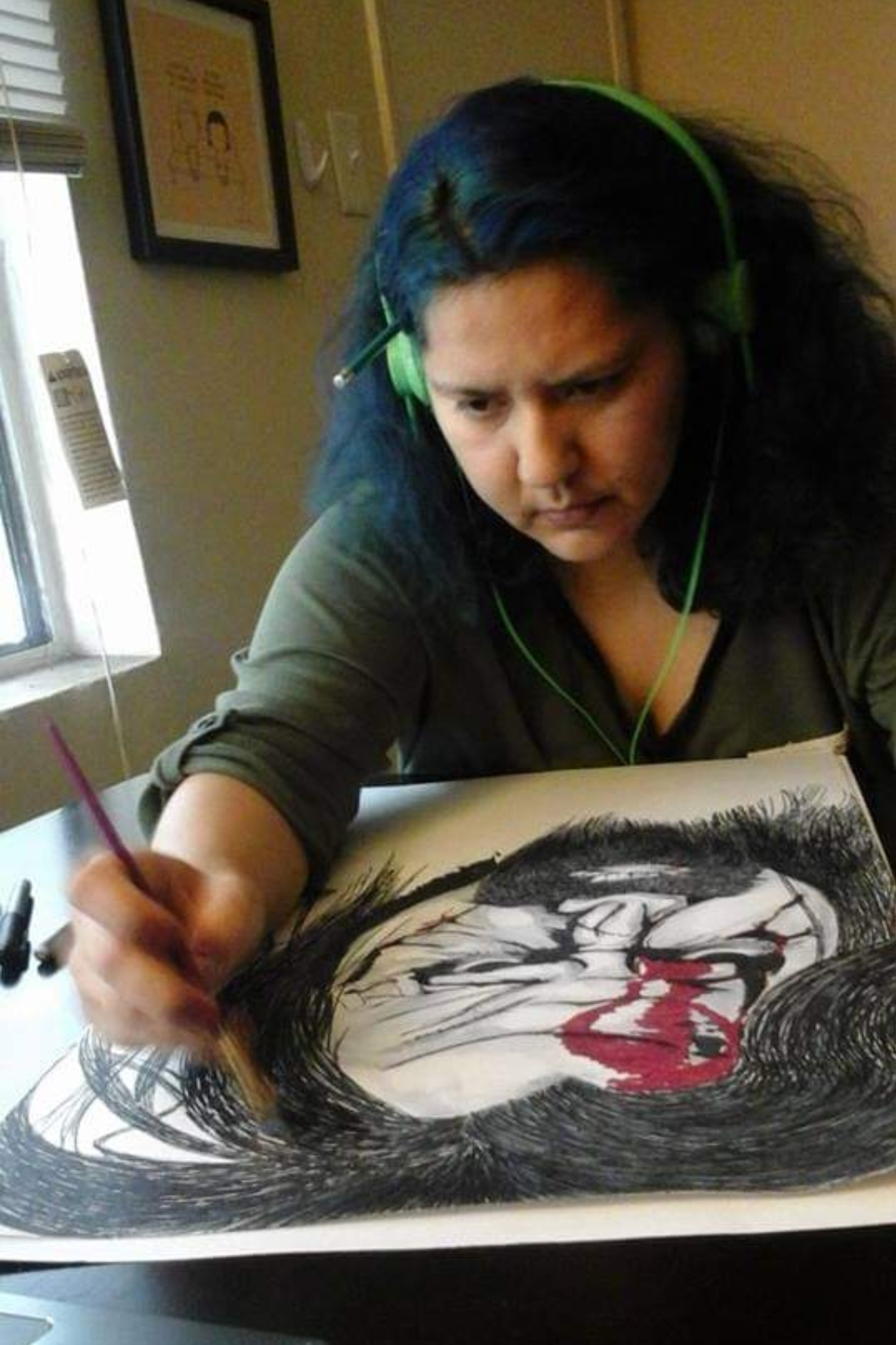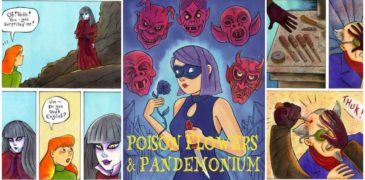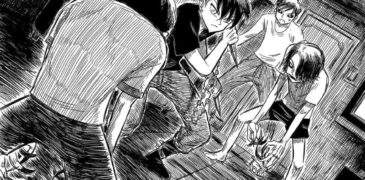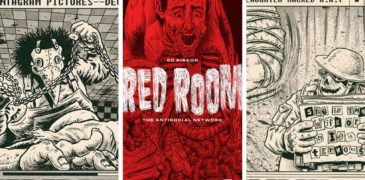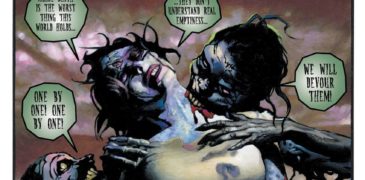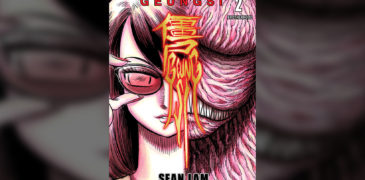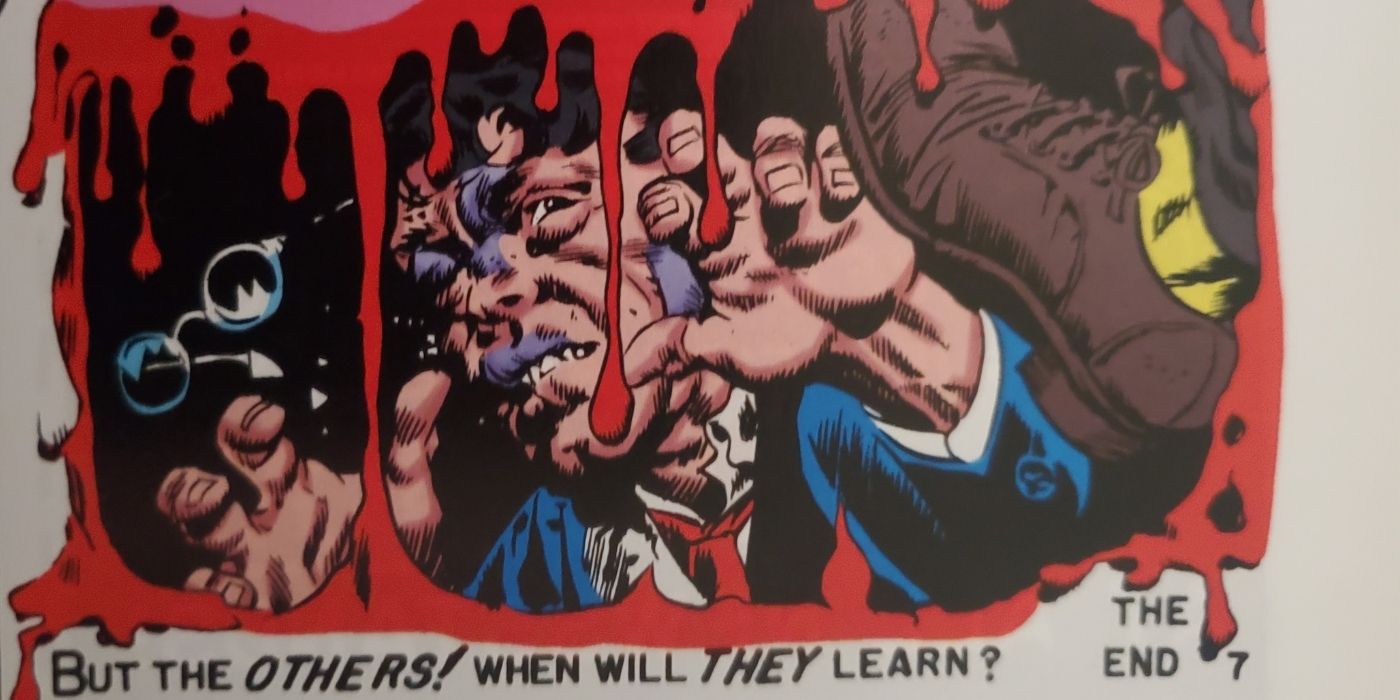
When I found the EC Archives Shock Suspenstories published by Dark Horse Books, I had the most vivid memory return to me in my local comic book shop. I was ten again! As a child, I searched in the stifling heat of my Tio’s dimly lit garage. The smell of old dust of years past disturbed and forced up again from its resting places. There, covered in aged grime and dirt, was a box full of my dad’s old comic books! Seeing the familiar art style again filled me with interest, adoration, and curiosity. I had to know what plot the EC Archives Shock Suspenstories had to tell. I was not disappointed.
Despite being created during the superhero golden age, more modern art techniques from the silver age gave the comic magazine a distinct edge. This artistic advantage and evolution were due to the head of EC Comics, William M. Gains, hiring a younger team of artists and writers, including Jack Kamen, Jack Davis, Joe Orlando, Graham Ingles, Marie Severin, Wally Wood, and Al Feldstein. They produced better detailed, three-dimensional scenes and facial expressions that added to the dramatic use of bold and vibrant colors and contrasting darker muted tones. Their combined artistic talents create a fantastic atmosphere that amplifies the scenes and pulls readers along with the characters, so that both feel every emotion as the stories unfold. It all comes together exceptionally well with the imagery created by the writers.
In The Neat Job, Eleanor Berdeen is afraid of the looming idea of being a woman that society regards as too old for marriage. Thus, she has agreed to marry Arthur, a man she does not love. She explains that although she was gifted a grand, century-old mansion furnished with hand-picked antiques, she was unhappy. While she got the husband that she insisted she needed, the pleasures of being a wife in her home did not exist. Arthur’s ability to measure and correct her performance as a wife, forcing her to attain constant neatness, drives Eleanor into despair.

The Neat Job is written from Eleanor’s first-person point of view. Her use of the pronoun ‘I’ reveals her emotional state of being as the story unfolds. She also gives readers more information about what society expected of women at that time. Here, readers can sense her growing desperation to appease her husband and follow his neatness standards. However, the effect of Arthur’s emotional degradation towards his wife and the trauma she endures leaves everyone unsure of how well she will fare.
The mood immediately makes readers apprehensive from the first scene. Something terrible has happened, leaving Eleanor catatonic. The mounting sense of despair and isolation builds, and bestows readers with a natural feeling of dread and anger as the story continues. The writers not only tell a simple story, but also present a realistic situation that compels the audience to see what happens next.
In the story Halloween, Ms. Ann Dennis finds a job watching over the children of Briarwood Orphan Asylum, run by Eban Critchit. The decrepit state of the building, and its minimal furnishings, reflect the condition of the children she finds within the institution. During the first night, Ann follows the sound of crying to a dormitory door which hides a disgusting and heartbreaking sight: thirty-four beds crammed inside a room with a small crowd of children encircling the crying young girl. Ann listens to these children and takes it upon herself to provide for them as best she can.
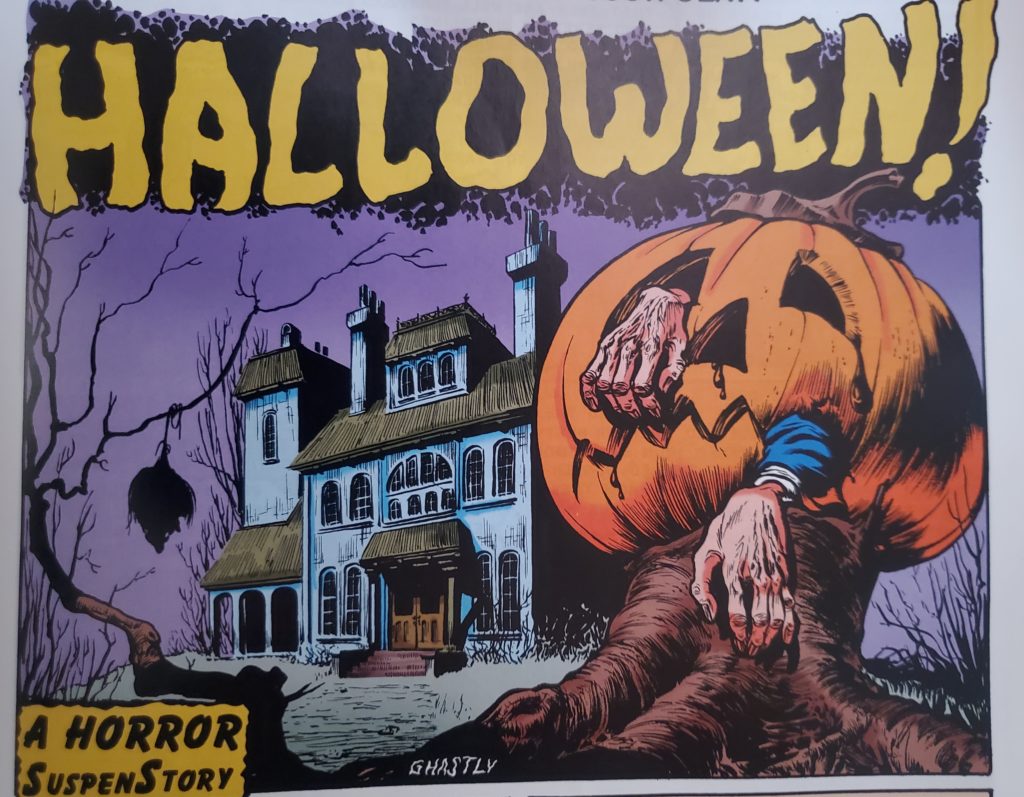
The depth of the characters in this story allows readers to relate to them as real people. The layers that create their personalities, such as societal expectations, thought processes, emotional states, and the circumstances that they find themselves in, create believability. This realness is very important because it establishes a connection with the individuals. The orphans’ vulnerability appeals to the reader’s emotions and protective instincts in the story. However, Eban Critchit becomes vilified due to his resistant behavior toward Ms. Dennis when he reasons that money is short and he cannot afford to spend on frivolities. As the story progresses, readers can also see themselves within the characters.
Although the EC Shock Suspenstories are aimed at a more mature audience, younger readers had the opportunity to discuss themes that were not allowed in polite company during the 1950s. For instance, in the story titled The Guilty!, the provocative theme is racial hate and discrimination. Such social commentary allowed readers to reflect on and address the controversial issue. Additionally, the creators of the Shock Suspenstories also encouraged their readers to engage with them by asking for thoughts and comments on their stories and the themes they contained. I feel this type of open conversation is an early form of community between the creators and their audience.
It is fantastic to see that HBO’s Tales From the Crypt created an adapted screenplay based on the EC Suspenstories, Split Second. This story was published originally in 1952 in the Shock Suspenstories Vol 1, Number 4. HBO would air their adaptation during the third season as episode 11. Aside from minor changes, the producers stayed as close to the story as possible. It is always enjoyable to see that great stories can be adapted and retold to newer audiences through various media.
I cannot express enough how much I enjoyed the Shock Suspenstories. Despite being a mix of stories that include the horror genre, I would highly recommend this collection to all horror fans. The variety of themes, settings, and characters creates a window into the past that allows readers to see society as it was, as it is, and the dangers that both dwelled within it and still linger today. In addition, the horror presented is executed skillfully and from differing points of view, which introduces readers to both implicit and explicit questions.
The EC Archives Shock Suspenstories written by Bill Gains and Al Feldstein are available as a physical book and also e-book. Readers can find this book on Amazon, Barnes and Nobel, and wherever books are sold. In addition, your local library may have a copy or two to lend.
More Comics Reviews
As comic fans know, Fantagraphics has always been the go-to for something delightfully different, and Poison Flowers and Pandemonium is no different. This behemoth of a comic tome, ringing in… Singapore-born artist and author, Sean Lam, has been working commercially since 2009. Building off of his love of both comics and manga, Lam’s career has been varied, seeing him working… The synopsis reads, “When eighteen-year-old bi, socially anxious, Harajuku fashionista Holly Roads is infected by blue blood that bestows destructive strength, she strikes a deal with a stubborn ex-CIA prodigy:… For as long as it has been a viable means for sharing media, the internet has been a fascination of the morbidly curious. Forums and sites set up on both… It is an odd realization that Evil Dead is looking at coming up on its 40th year anniversary, a film that, for many, catapulted their interest into horror cinema. In… Geungsi is an action thriller graphic novel series, written and illustrated by Singaporean artist Sean Lam. The story currently consists of two main volumes (check out our review of Volume…Poison Flowers and Pandemonium (2021) Comic Review: Magnificently Macabre
Geungsi Vol. 1 (2021) Comic Review – Vampiric Horror from Singapore
Magic Mutant Nightmare Girl Book Review: Examining Destructive Powers in a Frilly, Anxious Package
Red Room: The Antisocial Network Volume One Review – Requiem for a Stream
The Evil Dead Graphic Novel Review – Celebrating 40 Years of Horror
Geungsi Vol. 2: Brotherhood Manga Review – Singaporean Vampire Hunters
